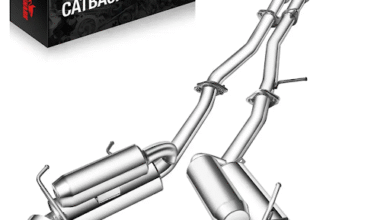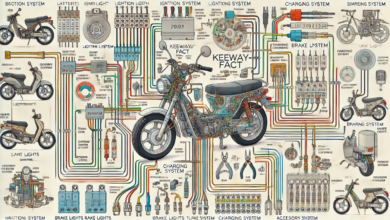Adapting Traffic Signal Maintenance to Meet Growing Suburban Demands

A New Reality for Suburban Infrastructure
The suburbs weren’t built for this—not for the endless streams of delivery trucks, school drop-offs, hybrid commuters, or e-bike riders weaving between once-quiet roads. What used to be a landscape of cul-de-sacs and sparse intersections now pulses with constant movement.
And yet, much of the traffic infrastructure supporting this growth remains outdated.
Suburban road systems, originally designed for low-density vehicle use, are under increasing pressure. One of the most strained components? Traffic signal systems. What was once a simple two-way stop is now a congested four-way intersection—and outdated signal infrastructure is struggling to keep up.
To address this, municipalities must shift their approach. Traffic signal maintenance can no longer be reactive; it must become a proactive and central component of a scalable infrastructure strategy.
From Patchwork to Strategy
The Legacy Problem
When we think of traffic signals, we often picture major urban intersections. But in suburban areas, traffic signals have often been added incrementally—without a comprehensive plan. As a result, many suburbs are left with disjointed systems that lack standardization and efficiency.
With rapidly growing populations, these inconsistencies become problematic. Increased residents mean more vehicles, more pedestrians, and heightened stress on systems never designed for such demand.
The Need for Infrastructure Audits
Cities must begin with a full audit of existing traffic signal infrastructure:
- Software versions
- Sensor functionality
- Signal timing plans
Without this foundational data, it’s nearly impossible to create an effective maintenance or upgrade plan.
Synchronization and Scalability
Uncoordinated Signals = Wasted Time
In urban cores, signal systems are often timed and networked to ensure smooth traffic flow. Suburbs, however, frequently operate independent signals, creating stop-and-go patterns that frustrate drivers and waste energy.
As suburban traffic increases, this lack of coordination causes ripple effects:
- Delayed commutes
- Slower emergency response
- Off-schedule public transit
- Increased fuel use from idling
Building Smarter Systems
Traffic signal installation in these areas must prioritize connectivity. New and upgraded systems should integrate with existing infrastructure and support adaptive programming. Features like remote monitoring, real-time volume sensing, and programmable timing are essential—but only if cities have trained staff and sufficient resources to maintain them.
Smaller jurisdictions often lag not because of apathy, but due to outdated processes and insufficient funding.
Lighting the Way Forward
Visibility and Safety
As traffic flows shift, visibility needs evolve too. Poor lighting at busy intersections is a serious safety risk. Street light installation must accompany signal upgrades, particularly in expanding suburban corridors.
To ensure both safety and functionality:
- Lighting must be aligned with traffic signal placement
- Maintenance must address overgrown trees, dim fixtures, and inconsistent coverage
Integrating Street Light Maintenance
Like signal systems, lighting requires a long-term maintenance plan. Street light maintenance must be integrated into broader infrastructure workflows, not relegated to sporadic response calls. When both systems are planned together, intersections become safer, more efficient, and more reliable.
Targeted Upgrades for High-Impact Zones
Strategic Planning Beats Reactionary Fixes
Near schools, shopping centers, and transit hubs, pedestrian and vehicle interactions happen constantly. Unfortunately, upgrades in these zones often occur only after incidents or public complaints.
To change this, cities should rely on:
- Traffic modeling
- Pedestrian activity maps
- Environmental impact data
These tools help determine where upgrades are most urgently needed.
Partnering for Smarter Planning
Organizations like Lighthouse Transportation Group are helping municipalities align signal and lighting strategies with long-term growth. Their expertise supports modular, scalable systems that evolve alongside suburban expansion—without overbuilding or wasting resources.
Efficiency Through Maintenance
Managing Energy in Expanding Suburbs
As suburbs grow, so does their electricity consumption. Public infrastructure—particularly lighting and signaling systems—plays a significant role in that load.
Investments in energy-efficient solutions like LED or solar-assisted lighting can reduce strain on the grid. But again, ongoing maintenance is essential.
Routine inspections and performance tests ensure:
- Controllers are calibrated
- Sensors function properly
- Systems don’t default to energy-wasting settings
Signals and Sustainability
Malfunctioning signal systems also waste energy. Poor detection loops, misconfigured timing, or failed communication links extend idle times and increase emissions. In an era of climate accountability, fixing these issues becomes more than operational—it’s a sustainability imperative.
Building the Future-Ready Suburb
What Does Progress Look Like?
A forward-looking suburb doesn’t just have new homes and wider roads. It features:
- Signals that adapt to real-time conditions
- Lighting that adjusts with pedestrian and traffic activity
- Systems that communicate, scale, and evolve
Achieving this vision requires more than new technology—it requires new processes.
The Cultural Shift in Maintenance
Cities must reframe how they think about infrastructure teams. Signal repair crews are not just technicians; they’re stewards of mobility. Lighting maintenance must be routine, not reactive. Resources must be allocated based on future demand, not past patterns.
Conclusion: From Bottlenecks to Better Flow
Suburbs may not have been built for today’s traffic—but they can be redesigned for what’s next.
With intelligent traffic signal installation, proactive maintenance plans, and integrated street lighting strategies, suburban communities can trade delay for direction—and chaos for coordination.
Now is the time for cities to rethink how they maintain and modernize the systems that keep people moving. Because in the suburbs of the future, smart infrastructure isn’t a luxury—it’s a necessity.




